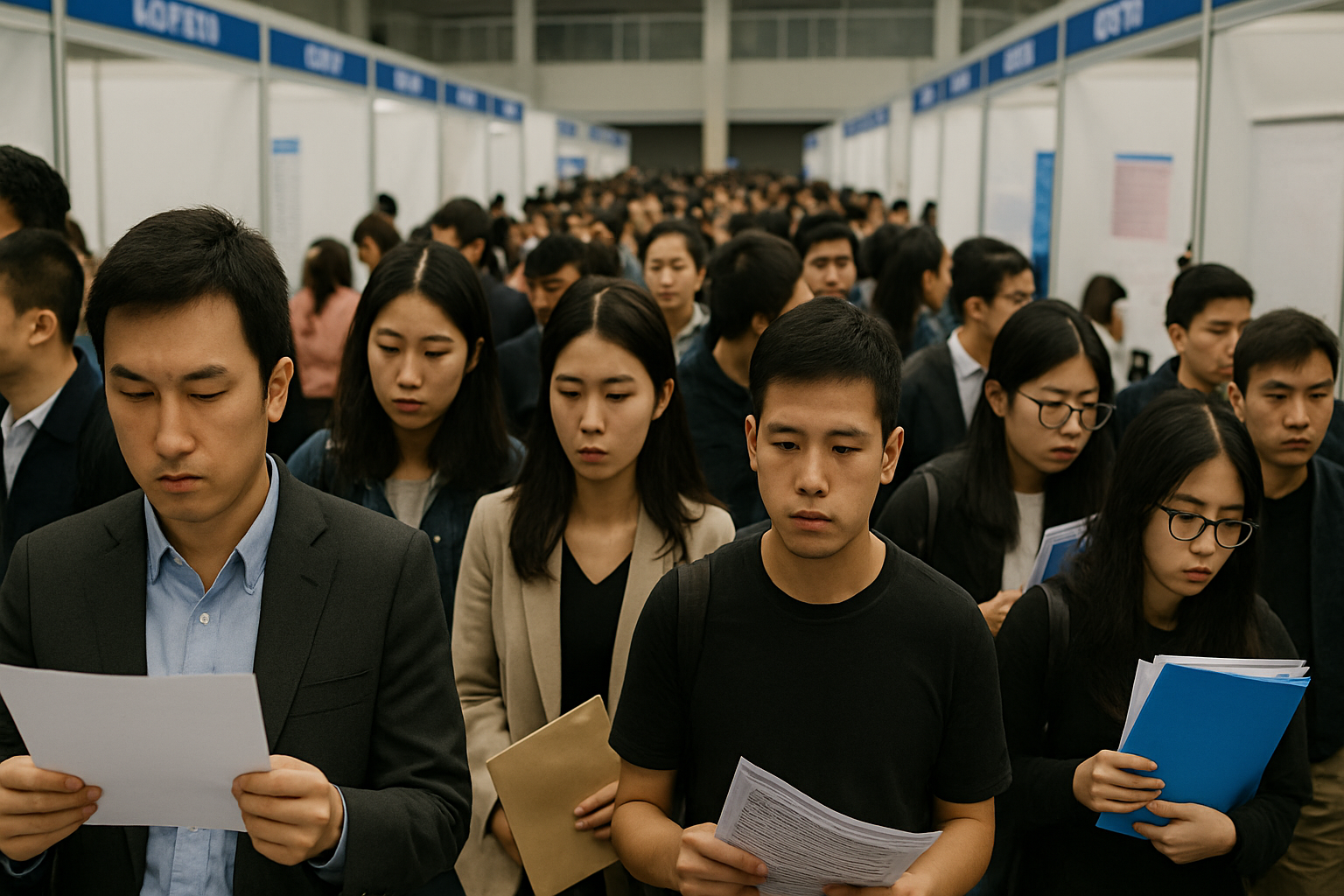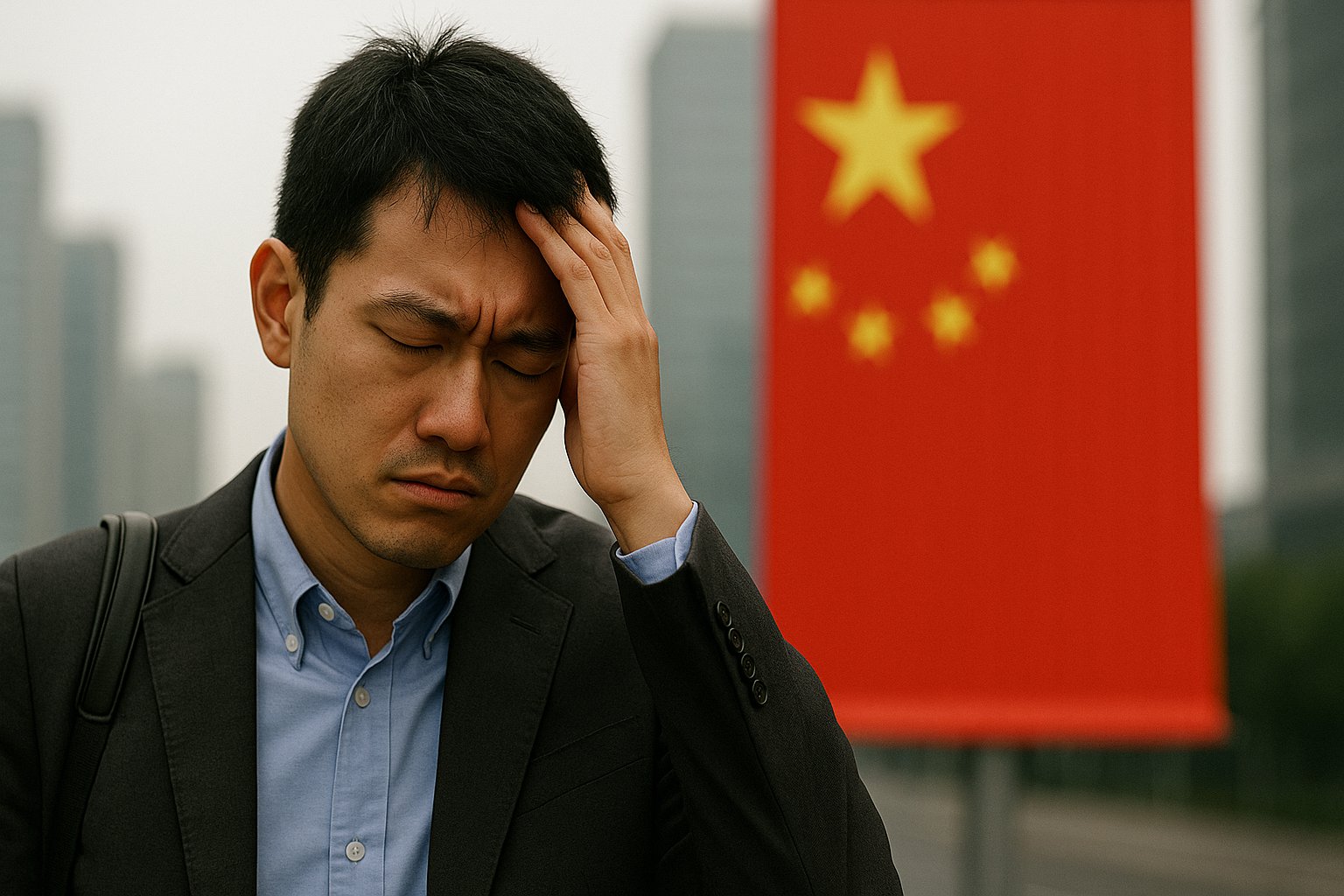The China unemployment rate 2025 is a key economic indicator attracting attention from policymakers, businesses, and investors worldwide. Understanding its future trajectory helps anticipate challenges and opportunities within the world’s second-largest economy.
As China navigates rapid technological change, demographic shifts, and evolving government policies, the labor market faces significant transformation. This blog explores the current state of unemployment, key factors shaping its future, and what to expect by 2025. Stay informed about the trends that will impact employment and economic stability in China over the coming years.
Want to succeed in China’s job market? Learn about essential China Business Etiquette to build strong professional relationships.
Current Overview Of China's Unemployment Rate
China's unemployment rate dropped to 5% in May 2025. The National Bureau of Statistics says employment policies are helping stabilize the labor market in cities.
Recent Trends And Statistics
Unemployment has edged down in recent months. The rate hit 5% in May 2025, down a notch from 5.1% in April.
The first half of 2025 has shown steady job conditions. The urban surveyed unemployment rate averaged 5.2% during this time.
That's a 0.1 percentage point drop from the first quarter. By June 2025, the rate stayed at 5.0%.
The National Bureau of Statistics tracks these numbers monthly across 31 major cities. Here's a quick look at the stats:
- May: 5.0%
- April: 5.1%
- March: 5.2%
- First half average: 5.2%
The 31-city survey stayed consistent at 5.2% in March, matching February. This points to a pretty stable market overall.
Impact Of Economic Policies On Employment
China's government has rolled out targeted policies to encourage job creation. The measures focus on helping young people and key worker groups find work.
The country expanded special-purpose loans for businesses that hire from priority groups. Companies meeting social insurance rules can now get subsidies for creating jobs.
Work-relief programs got broader coverage in 2025. These programs offer jobs to people in need as economic support.
Current policy initiatives include:
- Expanded loan access for employers
- Subsidies for hiring key groups
- Boosted vocational training
- Improved public employment services
China set a target unemployment rate of about 5.5% for 2025. The government also wants to create over 12 million new urban jobs this year.
The National Bureau of Statistics reports that employment-first policies are making a difference. These efforts help keep unemployment rates below the annual target.
Explore how shifts in employment impact trade by reading our detailed guide on China Supply Chain trends and challenges.
Factors Influencing China's Unemployment Rate By 2025

China's unemployment rate will be shaped by technology replacing workers, an aging population causing labor shortages, and government spending on job programs. These forces will decide if unemployment stays near the current 5.3% or changes a lot.
Technological Advancements And Automation
Manufacturing automation is changing China's job market at a surprising speed. Factories in places like Shenzhen and Guangzhou install robots that replace assembly line workers.
This shift hits millions of low-skilled jobs. AI and digital tools are now replacing office workers too.
Banks use automated systems for loan processing. Customer service companies use chatbots instead of humans.
The tech sector does create new jobs, but these need different skills. Software developers and data analysts are in high demand.
But you need college and technical training for these roles. Here's who's most affected by automation:
- Manufacturing: 30% of assembly jobs at risk
- Banking: Teller and processing roles shrinking
- Transportation: Self-driving trucks are being tested
- Retail: Automated checkouts are expanding
Workers over 40 face the toughest challenges. Many lack the digital skills needed for new jobs. Younger workers adapt faster to tech changes.
Demographic Changes And Labor Market Shifts
China's aging population brings both problems and chances for workers. By 2025, over 300 million people will be over 60 years old.
This means fewer working-age people to fill jobs. Rural-to-urban migration continues, but it's slowing down.
About 10 million people still move to cities each year for work. Cities can't always create enough jobs for everyone.
Education levels are rising fast. China produces 12.2 million university graduates every year.
But many can't find jobs that match their skills or pay expectations. The service sector is growing as China's economy shifts.
Healthcare, eldercare, and education all need more workers. These jobs often pay less than manufacturing but offer more stability.
Regional differences play a big role:
- Eastern cities: High competition for skilled jobs
- Western regions: Labor shortages in some places
- Northeast: Population decline leaves job gaps
Government Initiatives And Economic Stimulus
The government set a target of 12 million new urban jobs for 2025. They're aiming to keep unemployment near 5.5% through direct action and spending.
Infrastructure projects create jobs right away. High-speed rail, renewable energy, and city development projects employ millions.
These programs focus on areas with higher unemployment. Skills training programs help workers adapt to job market changes.
The government invests billions in vocational education and retraining. Priority goes to workers displaced by automation.
Tax incentives push companies to hire more people. Small businesses get lower taxes when they create jobs.
Startups receive government funding to expand their teams. Economic stimulus measures include:
- Green energy investments: Solar and wind projects
- Digital infrastructure: 5G networks and data centers
- Housing programs: Affordable housing construction
- Rural development: Agricultural modernization
Local governments compete to attract businesses with job creation perks. They offer land deals and fewer regulations to companies promising jobs.
Predictions And Implications For 2025
China's government set an urban unemployment target of 5.5% for 2025 and plans to create over 12 million new city jobs. Economic experts predict growth will slow below 5%, which brings both challenges and chances in the job market.
Expected Unemployment Rate Scenarios
The government wants to keep the surveyed urban unemployment rate at about 5.5% in 2025. This is a cautious approach, considering the current economy.
Recent data shows the rate averaged 5.3% in early 2025. That's the same as last year, so things are holding steady despite seasonal shifts.
Most experts see China's GDP growth dropping below 5% in 2025. Slower growth could make job creation tougher.
The government plans to create over 12 million new urban jobs this year. This matches targets from past years and keeps the focus on employment.
Three main scenarios could play out:
- Best case: Unemployment stays near 5.0% with strong job growth
- Likely case: Rate holds around 5.5% as planned
- Worst case: Rate rises above 5.5% if the economy stumbles
Potential Challenges And Opportunities For Job Seekers

You'll face a mixed job market in 2025. A record 12.2 million university graduates hit the job market this summer, so competition for entry-level spots is fierce.
Key challenges include:
- Lots of competition from new grads
- Slower economic growth affecting hiring
- Big structural changes in the economy
Opportunities are still out there:
- Government focus on job creation
- New urban job programs
- Growth in the tech sector, even with hurdles
Economic stress could raise protest risks, but that also means the government will likely double down on job stability. You can expect more policy support for employment.
The job market is shifting as demographics and workplaces change. If you can adapt your skills, you'll find new opportunities opening up.
Cities remain the main focus for job creation. If you're job hunting, urban areas will likely offer the best chances thanks to government-backed programs.
Protect your business from risks related to professional errors. Find out more about China Professional Negligence Claims and legal safeguards.
Conclusion: China Unemployment Rate 2025
China’s unemployment rate in 2025 is expected to remain stable around 5.1 to 5.3 percent, supported by government policies and strong job creation efforts. While challenges like a growing graduate population exist, China’s labor market shows resilience amid economic shifts.
Understanding these trends is crucial for businesses and investors navigating China’s evolving economy. Stay informed to make smarter decisions in this dynamic market.
For more insights on China’s economic landscape, read our article on China Contract Manufacturing.
Frequently Asked Questions: China Unemployment Rate 2025
Is unemployment going up in China?
No, unemployment isn’t rising in China. The rate fell to 5.1% in April 2025 from 5.2% in March. Government policies are helping to keep the job market stable.
Where does China rank in unemployment?
China’s 5.1-5.3% unemployment rate is considered moderate globally and low for a large economy. Many developed countries have higher rates. It compares favorably to Europe and other regions.
What is the unemployment rate in China in 2025?
China’s unemployment rate in 2025 is around 5.1-5.3%. The government aims to keep it near 5.5%. Despite approximately 12.2 million new graduates, the rate remains steady.
Which country has the highest unemployment rate?
Several countries have much higher unemployment rates than China. South Africa often exceeds 25-30%. Some European countries, such as Spain and Greece, also face rates above 10-15%.
Subscribe to receive updates
Subscribe to receive the latest blog posts to your inbox every week.




.jpg)
.jpg)
.jpg)